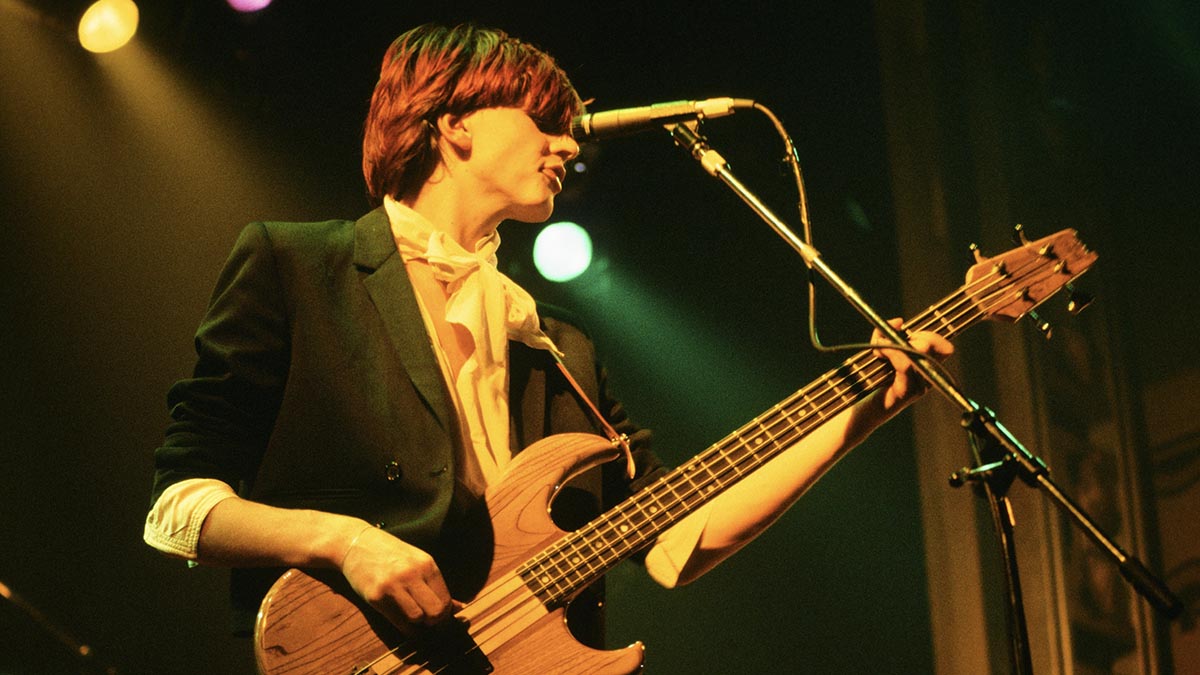John Taylor: “The energy is my department – it gets laid down by the bass and drums. It’s my job to bring as much energy to that mood as possible”
The Duran Duran bassist and recipient of Bass Player’s Lifetime Achievement Award on gear, technique and songwriting for a multiplatinum pop institution

With over 100 million albums sold over their 43-year career, Duran Duran could quite easily have retired to their own luxury island decades ago. Instead, they’re still creative, still touring, and – judging by their new album, Future Past – still as full of energy as ever.
Bassist and founder member John Taylor was inspired equally by disco and punk rock, and infused Duran’s many, many hits with a supremely slick, effortlessly funky range of bass parts that have entered the DNA of our community.
It’s high time he got this award, not least because he made it clear that bass players can be simultaneously the hottest and coolest members of a band. Of course, we knew that already.
It’s our great pleasure, John, to present you with Bass Player’s Lifetime Achievement Award.
“Wow! That’s lovely. It’s quite a surprise, and absolutely fantastic. You know, I constantly go back and forth between feeling like I’m really on top of playing bass, and feeling that I’m just so far behind. I don’t think any of us are the players we would really like to be, but you meet each day as a musician as best you can, with the best version of yourself that is available on that day.”
We enjoyed the series of bass videos that you did during the pandemic.
“Yeah! I never really thought about doing a tutorial of any kind, but it was mentioned to me, and I thought, ‘Well, if I’m going to do it, it’s going to be less about technique and more about a narrative’. So I did it from the perspective of how a Duran Duran song is written.
Get The Pick Newsletter
All the latest guitar news, interviews, lessons, reviews, deals and more, direct to your inbox!
“I’ve been fortunate in that my musical journey has really been about songwriting in a band that puts a lot of thought into its musical architecture. As much thought goes into the sound and the production of the song as the melody and the lyrical content.”
Where does the bass fit into that process?
“I ask myself where the bass is going and what its presence is going to be. I think about what the style is going to be, and what the sound is going to be, and I’ve got a team of people that I work with who are very encouraging of that. We all think of ourselves as progressives, you know, so we’re all looking for new ways to express something not too far away from what we’ve been expressing our entire careers.”
Is good technique important to you?
“Obviously technique is super-important, and when you’re alone and you’re not working, you can work on your technique all day long. But if you find yourself in a creative ensemble situation, and you’ve got to come up with a part that works with a bunch of other musicians’ parts, the conversation is about what we’re trying to do here.
My parts could be done, the bass could be tracked, sounding beautiful, and it could be months before Simon comes and says, ‘I figured out what this song is about’
“I’m also fortunate that I play with an ensemble that loves to jam. We do a lot of sketching – we did weeks of sketches for this album. They just piled up. I could come up with a new groove idea every few hours.
“Stage two is starting to curate those ideas, and at each stage we get a little bit more under the microscope. Sometimes my parts are done, and we still don’t know what the song is about. We have a very strange way of working. My parts could be done, the bass could be tracked, sounding beautiful, and it could be months before Simon [Le Bon, vocals] comes and says, ‘I figured out what this song is about.’”
Does the old Aria Pro II bass ever make an appearance these days?
“The last time I used the Aria was on our reunion tour in 2001, I think. I thought it would be nice to bring it back for a couple of songs like Save A Prayer. A few years ago, we looked into doing an updated version of my signature model, but it just didn’t work out.
“You know, when I found Peavey, I felt that their Cirrus bass really did everything that I’d ever got from the Aria. The people there were really on it, and they were very generous, so I didn’t really need to go back to Aria.
“I also think also that your body shape changes a bit over the years, and so does the way that we relate to the instrument, and I actually found when I put the SB-1000 on, or the SB-600 on, it felt a little bit unwieldy to me. I don’t like changing guitars throughout the course of a show, because I like to find a sound that works and stay with it. I’m still using Trace Elliot amps, too.”
We’ve seen you playing a Dingwall lately.
“I’m all over the Dingwall. I’m in love with that bass! I was in Toronto four years ago with a friend, and he said, ‘You should check out a Dingwall’ and showed me one of their basses on his phone. I was like, ‘Holy fuck, that’s beautiful.’ And I said to Bernie Guerra, my tech, ‘You’ve got to reach out to these guys.’
“Sheldon Dingwall is amazing. He is a real visionary, I feel, and everything that I’ve used of his has been really tremendous. On the new album, I had a single-pickup bass that I used on most of the songs.
“Rehearsing for this tour, I had a double-pickup Dingwall and I found that to be much brighter, with a graded dynamic range, and before I knew it, I had a three-pickup one which was even broader. I’ve been kind of bouncing between those three, and I’m really having fun.”

How do you get on with the fanned frets?
“I love it. I’ve not had a problem with it at all. It felt so intuitive to me from the moment I picked it up. I was almost like, ‘Wow, why aren’t all guitars like this?’ I don’t have particularly big hands, so it felt like a three‑inch heel on a five-foot guy. It just felt good.”
The new Duran album has so much energy. It’s so focused, and it sounds really up.
“I appreciate that, I really do, because I think the energy is my department. It gets laid down by the bass and drums in the initial sequences, when we’re setting the tone and setting the mood. It’s my job to bring as much energy to that mood as possible.”
- Future Past is out now via BMG.
Bass Player is the world’s most comprehensive, trusted and insightful bass publication for passionate bassists and active musicians of all ages. Whatever your ability, BP has the interviews, reviews and lessons that will make you a better bass player. We go behind the scenes with bass manufacturers, ask a stellar crew of bass players for their advice, and bring you insights into pretty much every style of bass playing that exists, from reggae to jazz to metal and beyond. The gear we review ranges from the affordable to the upmarket and we maximise the opportunity to evolve our playing with the best teachers on the planet.
“I asked him to get me four bass strings because I only had a $29 guitar from Sears”: Bootsy Collins is one of the all-time bass greats, but he started out on guitar. Here’s the sole reason why he switched
“I got that bass for $50 off this coke dealer. I don’t know what Jaco did to it, but he totally messed up the insides!” How Cro-Mags’ Harley Flanagan went from buying a Jaco Pastorius bass on the street to fronting one of hardcore’s most influential bands











